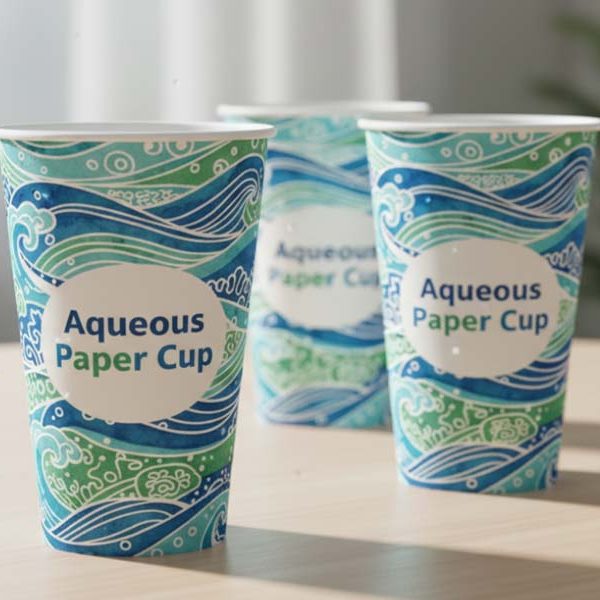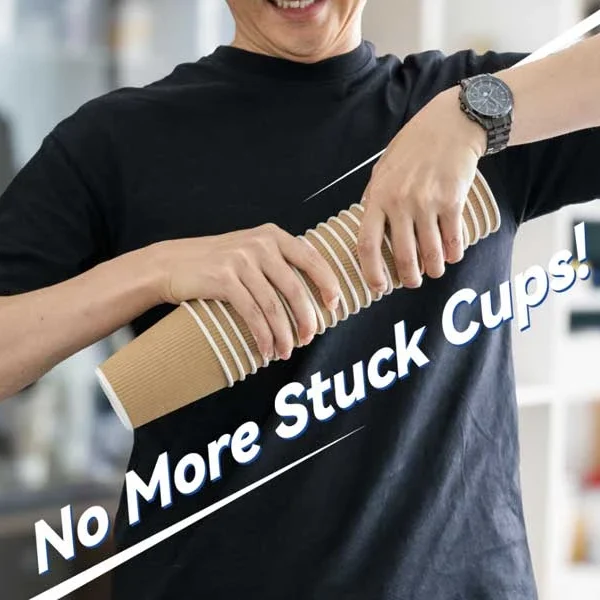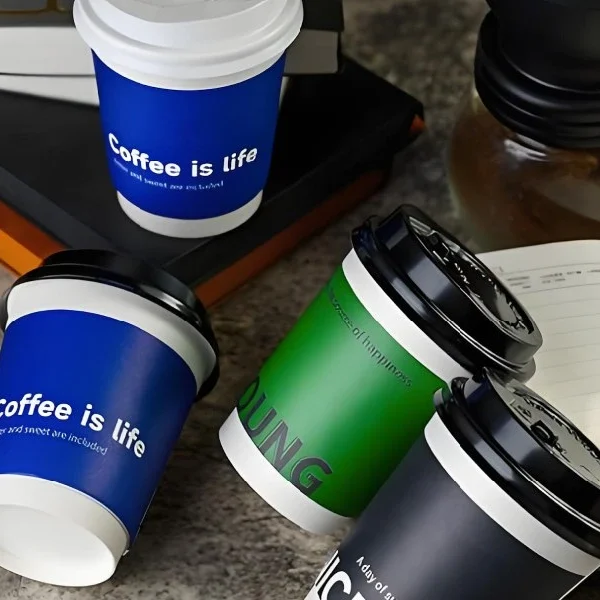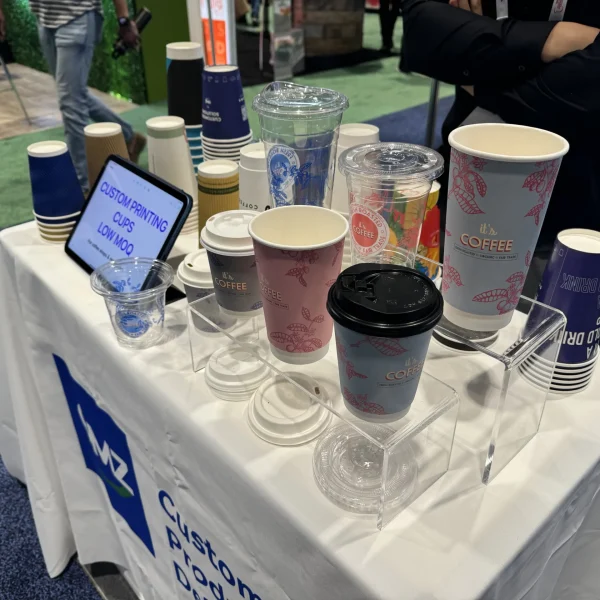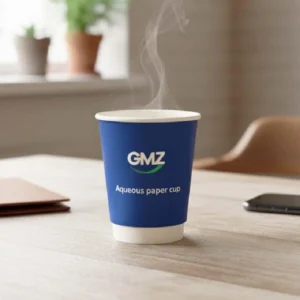Have you ever wondered what your coffee cup is made of? It looks like paper, but it’s hard to tear and resists leaks. You might toss it after one use, but can it really be recycled? Especially with big brands like Starbucks, are those cups truly eco-friendly?
This seemingly simple cup involves far more than you think: material choices, environmental concerns, legal standards, even brand image and consumer responsibility. Whether you’re a coffee lover or someone managing purchasing for a café, it’s worth asking: how are coffee cups made—and are they really sustainable?
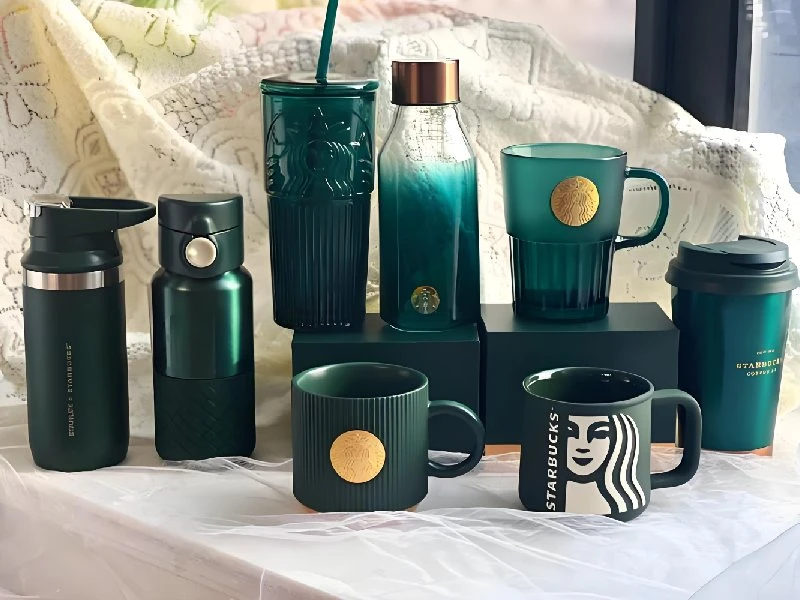
In this article, we’ll break down the most common materials used in coffee cups and reveal what brands like Starbucks actually use. From the inside out, we’ll uncover how these cups are made. As a paper cup manufacturer, GMZ will also share expert insights into more practical and eco-friendly material options, so you can make smarter choices when buying or designing cups for your brand or business.
What Are Coffee Cups Made Of?
From everyday disposable paper cups to reusable travel mugs and eco-friendly brand editions, coffee cups come in all kinds of materials. These materials don’t just affect how the cup feels or keeps your drink warm—they also determine how recyclable or sustainable the cup really is.
In general, coffee cups fall into two main categories: disposable and reusable. Each category includes several material options, each with its own pros and cons.
1. Disposable Coffee Cups
1)Paper + PE Coating
This is the most common type of cup used for hot drinks. It’s made of food-grade paper lined with a thin layer of PE (polyethylene) plastic on the inside to prevent leaks. While the paper itself is recyclable, the plastic coating is hard to separate, so these cups usually can’t be processed by standard recycling systems.

2)Paper + PLA Coating
PLA (polylactic acid) is a plant-based, biodegradable material. Cups lined with PLA are compostable under industrial composting conditions, making them a popular choice for eco-conscious brands. However, this coating still requires specialized facilities—home composting won’t work.

3)Plastic Cups: PP, PET, and PS
For cold drinks, disposable plastic cups are more common. PP (polypropylene) is heat-resistant, durable, and cost-effective, making it a go-to for many brands. PET (polyethylene terephthalate) is valued for its crystal clarity, ideal for iced coffees or colorful fruit beverages. PS (polystyrene) is mostly used for lids—lightweight but prone to cracking.

2. Reusable Coffee Cups
1)Stainless Steel
Known for its excellent heat retention, stainless steel is often used in premium travel mugs and branded collaborations. It’s durable, long-lasting, and ideal for people who are always on the go.
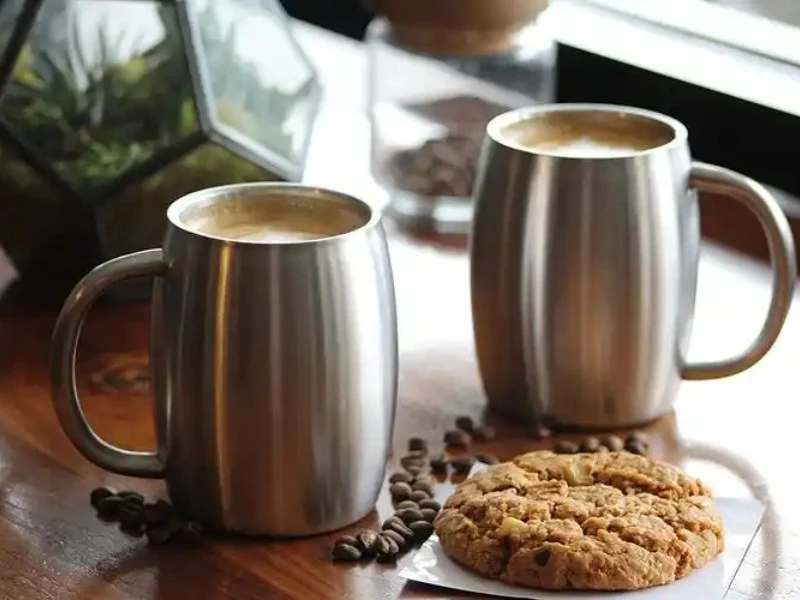
2)Glass and Ceramic
Glass and ceramic cups are great for in-store or office use. They’re stylish, easy to clean, and don’t retain odors. However, they’re also more fragile than other options, making them less suitable for travel.
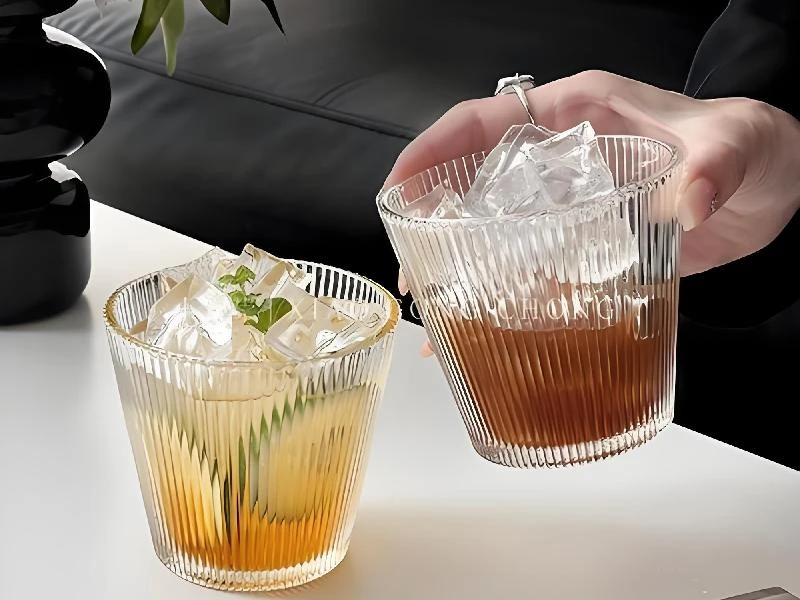
3)Plastic (PP or Tritan)
Lightweight and shatter-resistant, PP and Tritan plastic cups have become popular in the reusable cup market. Most are BPA-free, and Tritan offers a great balance of durability and safety—making it a go-to material for brands with a focus on sustainability.
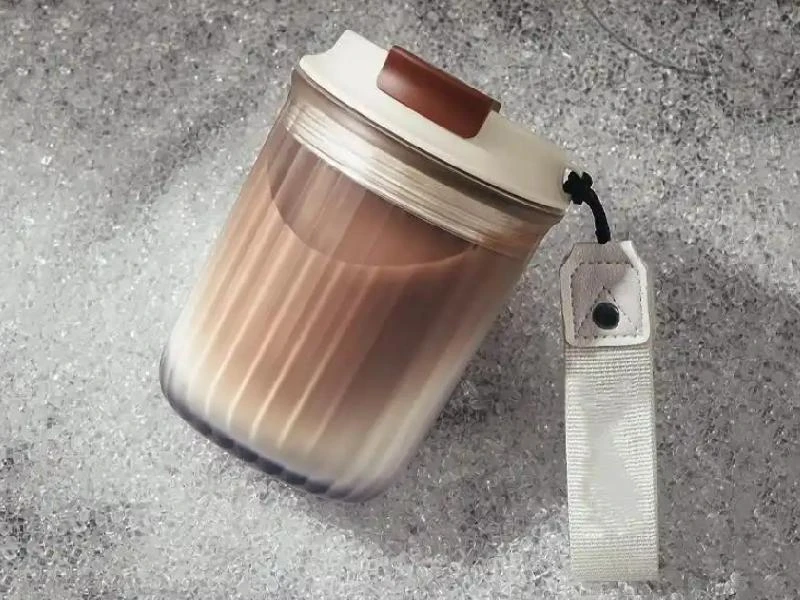
Each material comes with its own benefits and trade-offs. Understanding these differences is the first step to deciding whether a cup is practical, recyclable, or truly eco-friendly.
What Are Starbucks Coffee Cups Made Of?
To provide a well-rounded and reliable overview of Starbucks cup materials, we reviewed official brand statements and industry reports. We’ve also taken regional and timeline differences into account to give you accurate and insightful analysis.
1. Disposable Hot Cups: Paper with Plastic Lining
Starbucks’ standard hot cups are made from food-grade paperboard with a PE (polyethylene) lining for leak protection. They typically come with lids made of PP or PS plastic. While this structure offers good insulation and leak resistance, the plastic lining makes the cups hard to recycle.
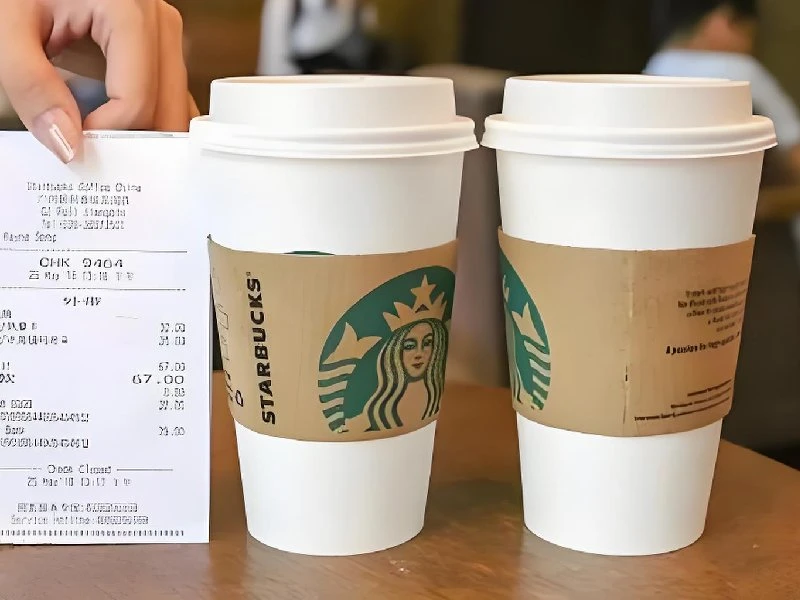
2. Next-Gen Compostable Cups (Piloted in the U.S. and Europe)
To tackle the recycling issue, Starbucks has launched pilot programs in parts of Europe and North America using new cup designs. These cups replace the plastic lining with biodegradable mineral- or bio-based coatings. These alternatives still prevent leaks but can break down under industrial or even home composting conditions—making them more eco-friendly and easier to process in existing recycling systems.
In North America, some test locations have also adopted cups lined with bioPBS (bio-based polybutylene succinate), a plant-derived material that’s compostable in industrial settings. It offers strong sealing and moisture barrier performance, making it a sustainable alternative to PE linings.
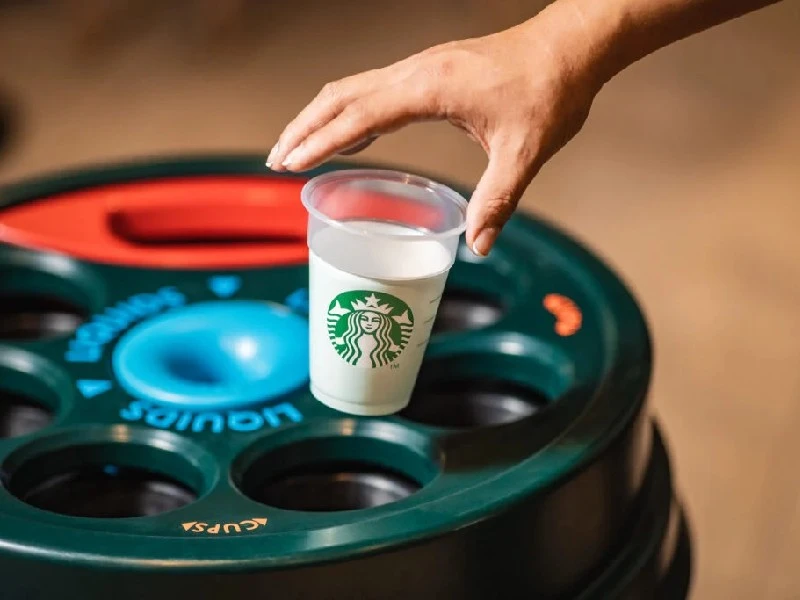
3. Cold Drink Cups: Shifting Toward Compostable Alternatives
Starbucks’ cold drink cups have traditionally been made from clear PP or PET plastic. More recently, the company introduced non-transparent, compostable options. In early 2025, Starbucks rolled out these new cups in 14 U.S. states—made with fiber-based bodies and bioplastic linings.
4. Reusable Cups: Bring-Your-Own and In-Store Options
Starbucks has been actively promoting reusable cup programs. Since 2024, stores in the U.S. and Canada have accepted customer-provided cups for in-store orders, drive-thru, and mobile pickups—with small discounts as incentives. The company also offers in-store reusable cups made from glass, ceramic, PP, or Tritan.
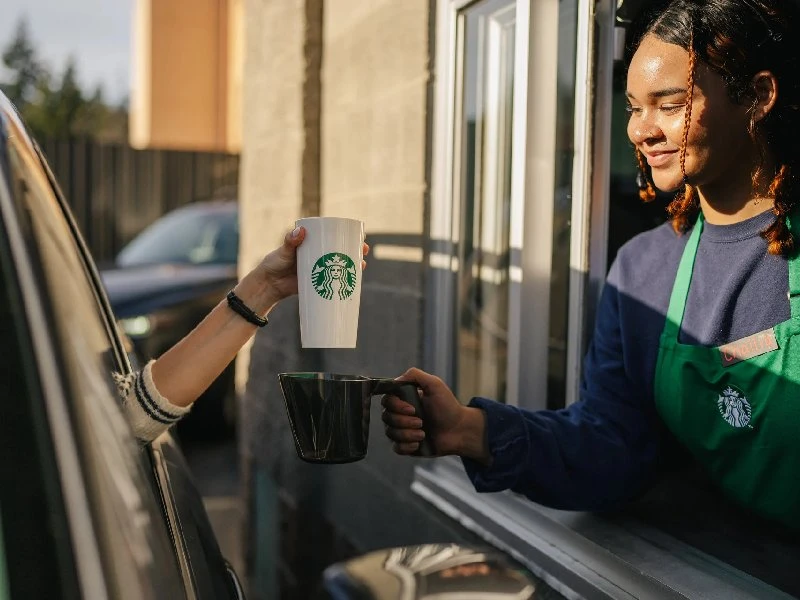
5. Sustainability Goals and Regional Differences
Starbucks aims to significantly increase reusable cup usage and cut single-use cup waste in half by 2030. Material strategies vary by region: Europe is testing mineral-coated cups, North America is piloting PLA and bioPBS linings, and some U.S. states are trialing compostable cold drink cups. These efforts reflect both the global ambition and the local complexity of Starbucks’ sustainability strategy.
References and Sources
- Starbucks wants to overhaul its iconic cup. Will customers go along?
- What’s in that drink? Starbucks becomes less Instagrammable – Business Insider
- Starbucks is making a big change to cups – but some iced coffee lovers will be mad – New York Post
- Starbucks Stories & News – Sustainability Initiatives
- Packworld.com – Starbucks trials compostable and recyclable cups
- BioPBS 简介(Wikipedia)
Misconceptions and Challenges of Disposable Coffee Cups
Many people assume paper cups are more eco-friendly than plastic ones—but that’s a common misconception. Most paper cups are lined with a thin plastic layer, usually PE, which makes them incompatible with standard paper recycling systems. As a result, their actual recycling rate is much lower than expected.
Don’t Miss: How to Tell If a Coffee Cup is Truly Environmentally?
Even when cups use bio-based linings like PLA or PBS, they’re only compostable under strict conditions. These materials need high heat, moisture, oxygen, and specific microbial activity—conditions found only in industrial composting facilities. Decomposition typically takes 90 to 180 days. If tossed into regular trash or sent to a landfill, these cups may persist for years without breaking down.

Regulations around “eco-friendly” cups vary widely across countries and regions. In many EU nations, paper cups with plastic linings are classified as “plastic-containing products” and must carry warning labels, or may even face usage restrictions. In U.S. states like California, compostable cups must meet certifications like ASTM D6400 or BPI to be approved for food use. Australia, meanwhile, requires third-party proof that anything labeled “biodegradable” will break down within a specific time frame.
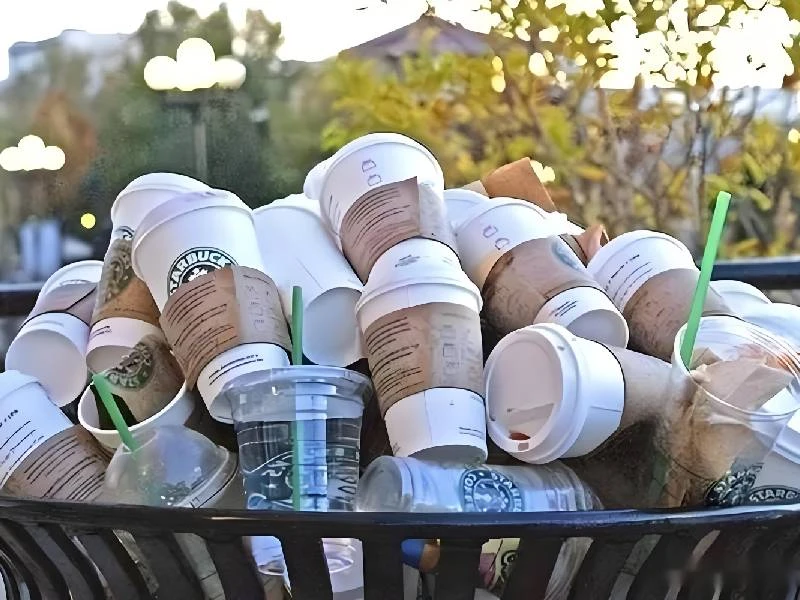
Because regulations and enforcement standards vary so widely, the same paper cup can face very different outcomes in different markets. A compostable cup that’s legally sold in Paris might be considered misleading advertising in California, or require a disposal fee in Amsterdam.

A paper cup isn’t automatically eco-friendly just because it’s made of paper. What matters more is the coating material, how it’s used, and where it ends up. As a buyer or brand owner, understanding these issues is key to making decisions that are not only marketable but truly better for the environment.
How GMZ Addresses Materials and Sustainability
As a manufacturer specializing in disposable paper cups, GMZ understands how crucial sustainability trends are when it comes to product design and material selection. Here’s how we’re taking action on multiple fronts:
First, we offer a variety of coating options—including traditional PE and more eco-friendly PLA. Based on your market’s needs and regulatory requirements, we help you choose the most suitable solution.

Second, we support multiple cup structures—single-wall, double-wall insulated, and triple-layer ripple cups. These designs improve user comfort while reducing the need for plastic sleeves and lowering overall material waste.

On the production side, GMZ offers advanced customization capabilities. We provide OEM and ODM services for sizes, designs, and printing techniques—serving a wide range of clients, from foodservice chains to retail distributors.
In addition, our base paper and coatings come with relevant environmental certifications—such as compostability and food-contact safety—helping clients confidently meet local regulations and sustainability audits.
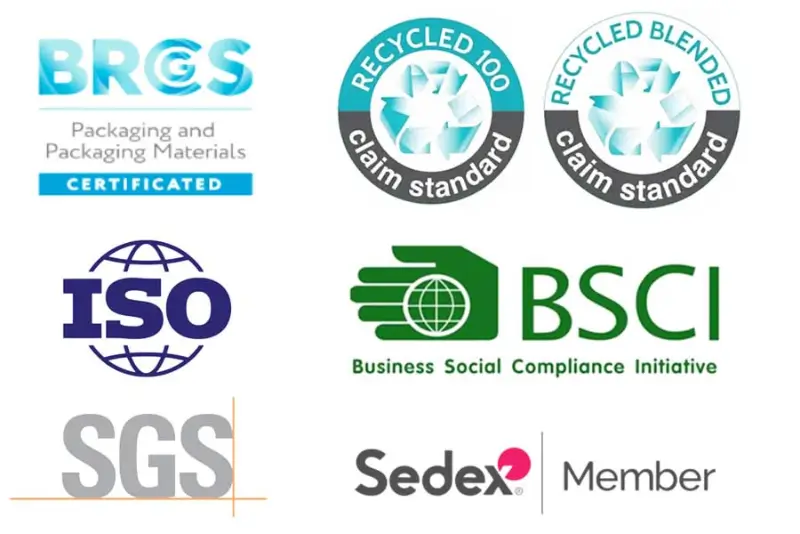
Conclusion
A coffee cup’s material might seem like a small detail, but it touches on sustainability, brand identity, legal compliance, and consumer trust. Whether you’re a coffee drinker or a business buyer, knowing what goes into a cup empowers you to make better, more informed choices.
At GMZ, we understand this deeply. We’re not just cup makers—we aim to be a sustainability-focused partner who provides real solutions. From material selection and structural design to production and certifications, we help clients find the right fit for their market and environmental goals. If you’re looking for paper cups that are eco-friendly, functional, and brand-aligned, we’d love to be your long-term, trusted supplier.

